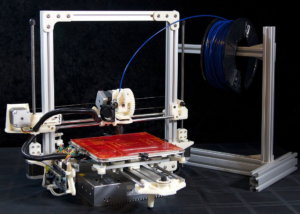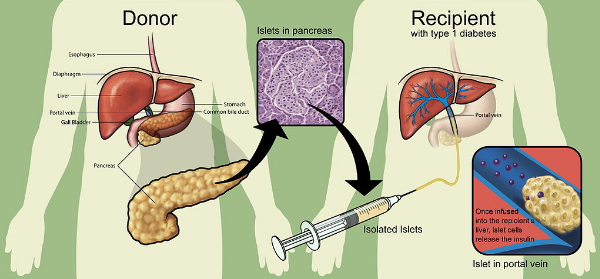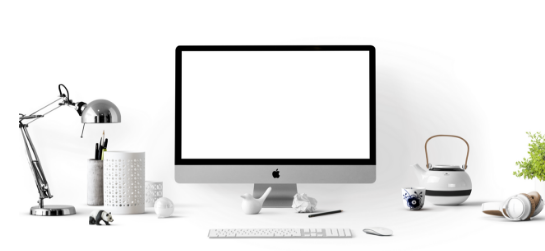
Sep 12, 2017
Image source
By Jerry Mooney
As you are reading this, there are approximately 75,600 people waiting for a transplant and a new person is added to the list every 10 minutes. Not only that, but 20 people sadly lose their lives every day due to no donor being available to them.
Add to Flipboard Magazine.
There are a number of factors which prevent more people from getting the life-saving treatment they need. A big one being that a large proportion of organs that are donated are not actually suitable for transplant,and another being the difficulties with finding a match; you can’t just transplant any old organ into any body – there needs to be a tissue match and finding one can take a lot of time, which is unfortunately, something a lot of people on the transplant list don’t have.
Being one of those people whose health is compromised while waiting for a new organ, or a member of their family, can be frustrating, desperate and completely heartbreaking, but there is some hope. There are lots of new things happening in the medical field, which could change the future of organ transplants and ensure fewer people die waiting for them, much sooner than you might think. Here are a few of them:
Bone Marrow Transplants
Bone marrow transplants have long been used to fight conditions such as blood cancer, as you will probably know, but they could soon be helping organ recipients to live a more normal life without the fear of organ rejection and the numerous drugs they must take to suppress their immune system and prevent rejection thanks to some forward thinking by a few brilliant people, who you can find out about at http://www.massgeneral.org/cts/. Massachusetts General Hospital’s transplant team have been trying out a new technique whereby they transplant donors’ bone marrow along with their organs, and it seems to have a mitigating effect on organ rejection without the drugs and the many side effects they bring.
It works by tricking the immune system into thinking the implanted organ is a natural part of the body, rather than a foreign invader that needs to be fought. Of course, a lot more research needs to be conducted in this area, but the future certainly looks brighter for transplant recipients in this respect.
Gene Editing Technologies
At HeraBioLabs.com, you can find out all about cutting edge gene technologies, which are making it easier to study the efficacy of various drugs. Similar gene editing techniques could also be used, some people believe, to edit the genes of pigs to create human organs for transplant, which would be one way of cutting down on the needless deaths of people on the transplant list.
Artificial Organs
Of course, there are researchers who are working towards a completely different solution to the problem altogether – artificial organs. These are organs that are completely manufactured by scientists, which means that, unlike natural organs, they could be made to really last a lifetime.
Right now, researchers are developing organs which are bioartificial in nature, which are capable of keeping patients alive until a suitable organ is found, but it is thought that, in the not too distant future, we will have access to artificial organs that are as good as the ones we’re born with.
There are some signs that this will happen very soon; take for example the artificial heart created by SynCardia systems which has already successfully kept a patient alive for almost four years and you can see that this is not merely a pipe dream,but a very real,life changing innovation that could soon be the norm.
3D Organ Printing

Image source
If you think printing your own bicycle frame or creating an action figure that’s an exact replica of yourself is impressive, you’ll be blown away by this Ted Talk by Dr. Anthony Atala in which he discusses the possibility of using 3D printer to create new organs and tissues for the body using a mixture of stem cells and biomaterials to create what is basically a working organ for anyone who needs one.
It’s mind blowing to even think about this, but he puts forward a very solid case whereby researchers gather data, using CT scans, about the patient’s organs and then use this to print out, layer-upon-layer a perfect replica of the failing organ using cells and biomaterials.
We’re probably a while away from this sort of thing becoming the norm, but when it does, it could certainly help to plug the gap between organ donors and people waiting for a transplant. I mean, scientists have already successfully printed a human ear, so anything is possible.
Equipment to Keep Organs Alive Outside of the Body
One of the problems with human organs is that they need to be kept inside a living body, being removed very quickly after death, if they are to be of any use to the recipient. Although medical staff do their best to ensure that no suitable organ is ever wasted, unfortunately, this isn’t always the case, due to time and distance restraints. That’s why it’s so exciting to hear that something like the Toronto XVIVO Lung Perfusion System exists.
This amazing piece of machinery enables organs to remain in good condition outside of the body for longer periods of time, so that they don’t lose viability and so that medical professionals can do more detailed checks on them to ensure that they are truly suitable for transplant.
As you can see, scientists and medical professionals are doing anything but rest on their laurels when it comes to trying to improve organ transplants for the people who really need them. Although many of the techniques listed in this post are still a while away from being used routinely, they are much closer to being a reality than you might think and they are set to revolutionize the care and treatment of transplant patients everywhere. No one wants to be sick, but should the worst happen and someone born today need a life-saving transplant, it’s unlikely they’ll have much to worry about thanks to today’s pioneers.


Aug 30, 2017
Post
By Lina Martinez
Cloud computing might have been born in 1999, but it’s true birth was years later with the arrival of the cloud. Since then, storage has never been the same and businesses have never looked back, until now. Although cloud storage has held the status quo for a decade or so, the industry is beginning to turn its back. Is it as helpful as people like to imagine? Can the company survive without it? What are the alternatives? These are all questions which need answering, and the best way to do it is a list of the pros and cons.
Pro: Unlimited Storage
As businesses now rely on the Web, storage is becoming more and more important. Also, the rise of data and Big Data, in particular, means companies need more storage space than ever before. The great thing about the cloud is that it has unlimited space, and it is still growing. All the supplier has to do is add more servers and RAM to power the expansion and hey presto. So, as long as it is in agreement, there is no reason to worry about finding places to store sensitive information.
Con: Security Flaws
However, one reason companies are turning their backs is that of security issues. In the past, incidents such as the Celebrity Hacking scandal have made people aware of the ease with which hackers can access data. It is even worse if the cloud a business uses is a public one and is not on a private server. Of course, there are additional cloud data security measures that the company can put in place that deals with security. However, when businesses pay a fee that is bound to last a lifetime, most feel the product should be faultless.
Pro: Connectivity
Thanks to the accessibility aspect of the software, a business can connect to the server at any time, anywhere. The implications of this are massive. To begin with, it allows the company to more productive as well as efficient. With access to files outside of the business, the organisation can generate and follow up on leads anywhere in the world. Also, it helps with communication. The fluidity of information is essential for modern businesses, and the cloud means people have the data at their fingertips. Too many bosses, this positive is enough to outweigh the majority of the negatives.
Con: Lasting Cost
Simply put, there is no reason to build a business version of the cloud. For one thing, it is too expensive to create and too much hard work, not to mention the hassle. Plus, it is a pointless task as suppliers provide an affordable product at a high standard. So, what’s the issue? The problem is that the cost will last forever, which businesses owners don’t like. The reason is two-fold. Firstly, there isn’t the freedom to cut costs should things take a turn. The fee is set in stone and that is final. Secondly, it means there is a reliance on a third-party which means they have leverage over the company.
Add to Flipboard Magazine.
To make a final decision, you have to weigh up the positives versus the negatives.


Aug 30, 2017
By Nigel Hilton
As the old saying goes; money can’t buy happiness. I know this, you know this, everyone knows this. However, money can buy a sense of comfort in life. It can allow you to stop worrying about bills, be less stressed out, and give you the funds to provide for yourself and your family. We may not like thinking like this, but money makes the world go round.
Which is why money is a key factor when choosing your career. You want a job that pays a good salary so you can live without financial trauma. This brings us onto the topic of today’s article; careers that pay extremely well. But, these aren’t just any careers, these are health care careers. Why? Because this is an industry that’s long been associated with high-paying careers. Largely, this is because most healthcare jobs require lots of training and education beforehand. So, all that hard work gets rewarded with a big salary. Not to mention the fact most jobs contain loads of responsibilities too.
Add to Flipboard Magazine.
People have always said that if you want a career with a good salary, work in healthcare. I’m going to illustrate this point by showing you the highest-paying healthcare jobs so you can see how much you might earn.

(Pexels: http://bit.ly/2xMh5mv)
Physician
Everyone knows that physicians earn a lot of money, and if you become one now you could be sitting on an annual salary of over $180,000. That’s an awful lot of money, but it’s a salary you will most certainly earn the hard way. Physicians have to consult with patients and diagnose their various illnesses and medical problems. Then, it’s up to them to prescribe the right course of treatment and ensure the problems are solved. They also have to carry out general medical examinations and screenings, such as testing patients for various forms of cancer.
The path to becoming a physician is very long and difficult – as you would expect for a job that’s so important. You need to start out by obtaining a bachelor’s degree, passing the MCAT test to get into medical school, spending four years in medical school, then completing around three to seven years of residency training. After all of that, you can get your medical license to become a full-on physician. Essentially, if you’re thinking of a career change and want to become a physician, you better make the decision as early as possible in your life!
Nursing Practitioner
You might be surprised to find a nursing job on this list as they’re usually the forgotten people of the healthcare world. However, if you make your way up the nursing career ladder, you’ll find a role that can pay upwards of $100,000 per year. A nurse practitioner is different from a regular nurse in that they have more responsibilities and a higher role within the organization. They can take on specialist roles and work with select portions of the population such as children or the elderly.
How do you become a nurse practitioner? To start, you have to become a Registered Nurse with a BSN. You can do this by getting a diploma or associate’s degree and then going on an online RN BSN program. Or, you can simply study for a BSN at a university of your choice. After this, you need to gain a good couple of years experience as a Registered Nurse. Then, you need to pursue a postgraduate degree and get a Masters of some kind in the nursing field. After this, you can gain certification by a nursing board to be a registered nurse practitioner.
Psychiatrist
Healthcare careers exist outside hospitals as well, with a psychiatrist being a very popular job for many. Could the popularity be down to the whopping annual wage of over $220,000? Possibly, but this isn’t a career you can enter for the fun of it. A psychiatrist has a very serious job diagnosing people’s mental illnesses and helping those in need. A lot of the work involves counseling sessions and therapy that’s designed to help break through mental barriers and improve patient’s mental health.
Becoming a psychiatrist is almost identical to becoming a physician in the path you take. Again, you need a relevant bachelor’s degree, then you have to pass the MCAT exam, then go to medical school, residency training, before finally being licensed. The difference is obviously that you will be studying for this particular field of healthcare, so you’ll learn a lot of different stuff. Plus, you need to get certified by the American Board of Psychiatry and Neurology before you can start practicing properly.

(Photo via: http://bit.ly/1UecBgF)
Pathologist
Pathologists are essentially physicians with a lot more responsibilities and a much harder job. If you’ve even been to see a doctor and they’ve taken blood, urine, or skin sample from you, they send it off to the pathologist. Here, the pathologist will look at the samples they’ve been provided and test them for various diseases. In doing this, they can diagnose the problems a person has, and give their findings back to the physician. It’s a very stressful and demanding job, as people’s lives can depend on the results of the pathology work. As such, it’s no surprise that the annual salary is well over $250,000!
To pursue this career, you need to become a qualified and licensed physician beforehand. So, follow all those steps up until you begin your residency. Here, you have to take part in additional pathology training. Once this is done, you can get your medical license, but you also need to become board certified. After this, you’re a proper pathologist, but you need to maintain your certification as you will be re-tested throughout your career.
As you can see, all of these careers provide huge financial incentives. They’re all at least triple the average salary in the US. Granted, getting into one of these careers requires loads of effort and education. But, if you want a career that pays extremely well, these are four that you may want to consider.


Aug 29, 2017
By Jerry Mooney
Most of us simply could not function without our most essential tech items. And many of those gadgets and gizmos become beloved and trusted ‘friends.’ After all, we spend more time staring at them than we do our partners or children! So what happens when newer models come out? Can you bear to let your much-loved tech drop into the recycle bucket?
Your smartphone
This tiny but mighty champion of useful technology is with us almost twenty-four hours a day. And yes, there are people that take these things into the bathroom with them. They connect us to every other human on the planet, and they even double up as a PA when you’re out of the office. So what happens when the latest iPhone is launched, or there’s an exciting new update, but your model is no longer supported?

Image credit
Add to Flipboard Magazine.
Fortunately, most of the data we use is stored elsewhere such as in the cloud. As long as you stick with the same brand or OS, you’ll be able to replace the handset and keep almost everything else the same.
Your tablet
Tablets are a little different than smartphones. While they can perform many of the same functions and tasks, they do tend to become obsolete a little more often. There are many apps and online services that simply won’t work with older tablets. And some tablets that don’t run current versions of Android or Apple OS will simply be exempt from the latest and greatest apps you might want. Sadly, tablets are best replaced as it is almost impossible to upgrade them once they are no longer supported.
Your computer
Anyone who uses their laptop as a workhorse knows the dilemma of replacing their machine well. Sure, the letters have worn off the keys. The screen has that annoying burn-out in the corner. And the touch pad for the mouse is so infuriating. But there is something rather personal about your personal computer. For a start, it is more private than your phone. You can store important documents offline. This means they only exist on that laptop. So what happens if you get a virus or the battery no longer charges?
Fixing your laptop is a must if it goes wrong. Find a good computer repair company that can retrieve your files at least. Chances are a couple of replacement parts or a refurbishment could bring your beloved machine back up to date.
Your TV
TVs are smart. If yours isn’t, how on earth are you coping? Netflix and other streaming services have revolutionized how we watch TV shows and movies. If your TV isn’t internet capable, then it really might be time to buy a new model.
Aside from the connectivity issues, there are screen resolution and screen size issues. Most current models exceed 43 inches and tend to be in 4K. This makes an enormous difference to the viewing experience. Add a USB stick, and many will provide a recording function if you don’t want to miss your favorite show. If you haven’t got all this, it could be time to replace your TV. Do you keep old tech past its support expiration date?


Aug 9, 2017
By Sharon Jones
Computers are incredibly helpful, but sometimes they can give rise to problematic situations in our lives. Because of this, it’s no surprise that everyone with a computer uses software; roughly 2 billion worldwide. Its also no surprise that software is one of the most targetable sectors on the planet. We can’t stop the distribution and use of software in the tech industry, after all, it’s necessary to nearly every business and personal computer on the planet. Whether you’re a browser or developer, we wouldn’t want to lose software use, so by highlighting the main concerns behind software vulnerability, hopefully both its creation and use can be made safer. Here are some cyber-security tips:
Add to Flipboard Magazine.

Image From Pexels
Information security attacks
This is a branch term referring to any malicious attacks on software. In 2016, hacker phishing attacks rose by 38% on the previous year, which shows the rising danger of the digital age, this is particularly true among senior citizens. Seniors’ online safety should be part of the strategies to counter cyber attacks. As more and more people become comfortable with and trained in technological developments, keeping your guard up and ensuring software parameters are properly installed is an integral part of the development process.
Although it can be a bit pricey, to decrease chances of downloading software with a nasty bug inside buy straight from well known brands that have plenty of previous use. When using less well known brands, look around on web boards for user testimonials or to compare the best software. This works well for editing and creative programs such as photoshop and its alternatives.
Increase in data protection measures
We can learn how to navigate 2017 when online by looking at statistics of previous years. In 2016, there was over a 50% increase in use of detection tools for the personal and business industries. Using detection software is incredibly important as it allows a user to monitor and scan for any malware on a PC or company system.
Many data protection sources are available online and in the shops, offering trial runs and contracts of usually 1 month, 6 months, or 12 months. This will allow you to find out which firewall is most customisable and suits your needs.
The rising need to protect software branding
With the move into the digital for both creating products and access to them, many programs exist for the same purpose. If you’re a creator, and you’re worried about missing opportunities due to being seen as malware, it’s a good idea to get trademark protection for software. This keeps a brand name for the sole use of its creator, and doesn’t allow potential hackers to publish under your name to ruin your reputation. Using a trademark will also often put off anyone wishing to imitate the software’s application. However, a trademark on a brand will not stop the functionality idea being imitated in another independent program. Having a trademark on a software brand will give it a seal of trustworthiness.
Overall, the most important takeaway is not to be afraid of using the web. By employing some of the tips included above, you’re less likely to be targeted.


Aug 1, 2017
Pexels.com
By Nigel Hilton
Can computers really make you ill? Some people would like you to think so.
There have been various reports in the media that there are now some modern diseases and health conditions that stem from our excessive use of computers and laptops. But is that really the case? Read on to find out the truth about computers and illness!
Back And Neck Strain
Add to Flipboard Magazine.
Lots of people find that they start to develop back and neck pain after they use their computer for a long time. This is because most people slouch when they are sitting in front of a computer. There are some ways to try and remedy this. The first thing you should do is buy a professional computer chair as these are ergonomically made to help with posture. You can find these at most good office chairs stores. It is also important to make sure that your screen and keyboard are correctly placed on the desk. Ideally, your forearms should have enough room to rest on the desk. Your screen should be at eye height, but not too close to your eyes.
Repetitive Strain Injury
If you are on the computer for a while, you will no doubt be typing for a lot of that time. And that can be bad for your hands and wrists. In fact, if you regularly type for long periods, you might find that you end up developing repetitive strain injury (RSI). This occurs when joints are repetitively used and end up getting strained. The best way to deal with this condition is to rest your hands as often as possible. You can also buy special wrist rests to place under your wrists while you type. These take away some of the strain from all that typing!

Pexels.com
Insomnia
Do you find that it takes you awhile to get asleep after you’ve been working at your computer? That’s all to do with the blue light that computer screens emit. This blue light reduces the amount of melatonin that the body produces. Melatonin is needed to help the body and mind fall asleep at nighttime. Overnight, our melatonin levels fall, causing in us waking up in the morning. After a long time at the computer, your melatonin levels will be very low, making it much harder to fall asleep. For this reason, it’s important that you have a break away from the computer for at least an hour to give your melatonin levels a chance to build up.
Radiation
Some people believe that computers are dangerous because of the amount of radiation they emit. It’s true that they do emit radiation – but is it really damaging to our health? There are still lots of studies into this and, thankfully, most of them say that the radiation levels are too low to make us ill. However, if you are worried about radiation, the best thing you can do is limit your time on the computer.
If you take all the right precautions, you shouldn’t have to worry about any adverse health effects from your computer.


















Recent Comments